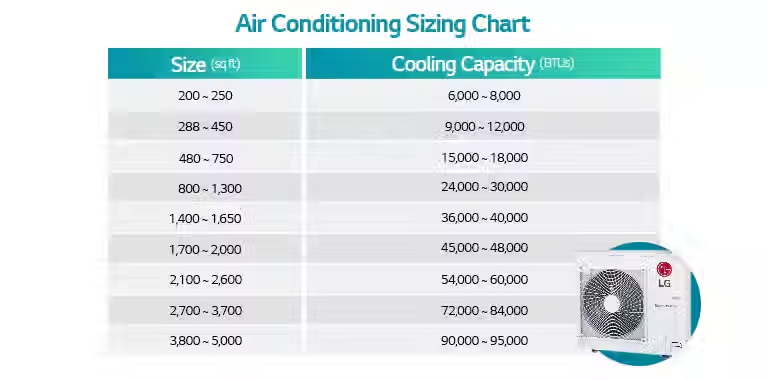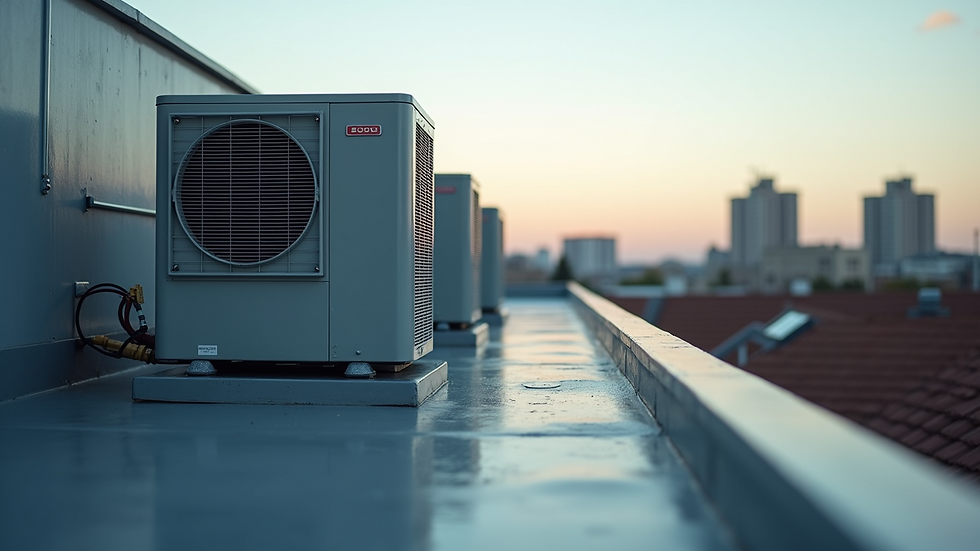Understanding the Importance of Air Conditioning BTU Ratings
- Kirill Anikin
- Jun 19
- 5 min read
Air conditioning plays a vital role in our comfort, especially during sweltering summer months. With numerous options available, knowing how to gauge an air conditioner's effectiveness is essential. One key measurement is the British Thermal Unit (BTU). This blog post covers what BTU ratings are, why they are significant, and how to select the best air conditioning system for your needs.
What Are BTU Ratings?

BTU, short for British Thermal Unit, measures the amount of heat needed to raise one pound of water by one degree Fahrenheit. In terms of air conditioning, it indicates the cooling capacity of a unit—how much heat it can remove from a space in one hour.
Air conditioning units are often rated in BTUs per hour (BTU/h). This rating is essential for determining how well a unit can cool a specific area. Units with higher BTU ratings can cool larger spaces more effectively, while lower ratings are suited for smaller areas.
Understanding BTU ratings is crucial; selecting the right capacity can dramatically influence energy efficiency, comfort, and overall performance.
Why BTU Ratings Matter

Choosing an air conditioning unit based purely on aesthetics or features can lead to frustration and inefficiency. Here are a few reasons why BTU ratings are so important:
Energy Efficiency
Selecting a unit with the correct BTU rating directly impacts its energy efficiency. For instance, if you choose a unit that is too small (with a low BTU rating) for your room, it will struggle to maintain the desired temperature. This leads to longer operation times and increased energy consumption, sometimes by as much as 40%, resulting in higher utility bills.
On the flip side, a unit that is oversized (with a high BTU rating) cools a space too quickly, causing the unit to cycle on and off frequently. This short cycling can lead to uneven temperatures and increase wear on the unit—potentially halving its lifespan.
Comfort Levels
The primary role of air conditioning is to ensure comfort indoors. A unit that matches the appropriate BTU capacity delivers consistent cooling throughout the space, effectively eliminating unwanted hot spots or cold drafts.
For example, in a 400-square-foot living room, a unit with the correct BTU rating can provide an even and comfortable environment. A mismatch—either too low or too high—can lead to discomfort and reduced productivity, impacting daily life.
Longevity of Equipment
Air conditioning units under optimal conditions can last longer. By choosing a unit properly sized for your space, you’ll reduce the strain on the system and help prevent premature breakdowns. A properly selected unit can last up to 15 years, while an overworked system might only last half that time.
This means significant savings on replacements and repairs over time, as you extend the life of your investment with the right BTU selection.
How to Calculate the Right BTU Rating for Your Space

Finding the correct BTU rating for your room isn't overly complicated. Here’s how to make sure you get it right:
Measure the Space
Start by measuring the size of your room in square feet. Multiply the length by the width of the room to get the total area.
For example, a room that is 20 feet by 15 feet calculates to:
20 ft × 15 ft = 300 square feet.
Use a BTU Calculator
After measuring the area, you can consult a BTU calculator or the guidelines from manufacturers. Typically, a good rule of thumb is to allow about 20 BTUs per square foot of living space.
For our 300-square-foot example:
300 sq ft × 20 BTUs = 6,000 BTUs.
This means an air conditioning unit with a cooling capacity of 6,000 BTUs would be suitable for that room under typical conditions.
Adjust for Additional Factors
Sometimes, other factors will influence your required BTU rating. Consider the following adjustments:
Ceiling Height: Rooms with higher ceilings may need additional BTUs for effective cooling.
Sun Exposure: If the room gets a lot of sun, you might need a higher BTU rating. Conversely, shaded spaces can require less.
Occupancy: More occupants in a room generate added heat, which impacts cooling needs.
Heat-Producing Appliances: If you have computers, ovens, or other heat-generating appliances, factor in the increased cooling capacity required.
Adjusting for these variables will help ensure your selected BTU rating meets your actual cooling needs.
Common BTU Ratings and Their Applications
Here are common BTU ratings along with their ideal applications:
5,000 - 6,000 BTUs: Best for small rooms, up to 300 sq ft, like bedrooms or home offices.
7,000 - 8,000 BTUs: Good for medium-sized rooms, up to 400 sq ft, including larger bedrooms and small apartments.
9,000 - 12,000 BTUs: Best for larger living spaces, up to 600 sq ft, or small commercial areas.
13,000 - 15,000 BTUs: Ideal for very large spaces, up to 800 sq ft, especially in sunny locations.
16,000 BTUs and above: Suitable for commercial applications or large homes requiring significant cooling, typically over 1,000 sq ft.
Selecting the right BTU rating boosts system efficiency.
The Role of BTU Ratings in Selecting the Right AC System
While BTU ratings are key, other crucial aspects come into play when choosing an air conditioning system. Factors like energy efficiency ratio (EER), seasonal energy efficiency ratio (SEER), and the type of air conditioning system are also important.
Energy Efficiency Ratio (EER) and Seasonal Energy Efficiency Ratio (SEER)
EER measures the cooling output per unit of energy consumed, while SEER evaluates efficiency over an entire cooling season. Higher EER and SEER ratings indicate better efficiency.
Opt for units with a high SEER and EER in addition to the right BTU rating to ensure effective cooling and lower energy bills.
Types of Air Conditioning Systems
Different air conditioning types have various benefits. Consider these options:
Window Units: Economical and straightforward, window units work well for single rooms, ideal for small homes or apartments.
Central Air Conditioning: Best for larger homes, these systems efficiently cool multiple rooms with consistent temperature control.
Mini-Split Systems: These systems don't require ductwork and allow customized temperature control in separate zones.
Each system has distinct BTU requirements depending on the space being cooled.
Maintenance Tips for Air Conditioning Units to Optimize BTU Efficiency
After selecting and installing your air conditioning unit, regular maintenance is essential to keep the system functioning well. Here are some tips:
Regularly Clean or Replace Filters
Dirty filters restrict airflow and force the unit to work harder, cutting efficiency. Clean or replace filters every three months to maintain optimal airflow.
Schedule Professional Maintenance
Consider hiring a technician for annual maintenance. They can check all components for functionality and address any potential issues early.
Keep the Area Clear
Ensure the outdoor unit is free from obstacles like branches or debris. Clear airflow is crucial for efficiency.
Monitor Temperature Settings
Keep your thermostat at a reasonable setting. Raising the temperature a few degrees when you’re out can lead to energy savings of 10% or more.
By following these maintenance strategies, you can maximize your air conditioning unit's efficiency and sustain the BTU capacity you’ve selected.
Final Thoughts on BTU Ratings and Air Conditioning Choices
In summary, understanding BTU ratings is essential for anyone considering an air conditioning system. These ratings impact both cooling capacity and your investment in energy, comfort, and equipment longevity. By utilizing this information, you can make informed decisions that enhance your indoor climate during hot summer days.
Take the time to assess your specific needs, calculate your space requirements properly, and maintain your unit diligently. With the right approach, you can achieve efficient and comfortable cooling for years to come.



Comments